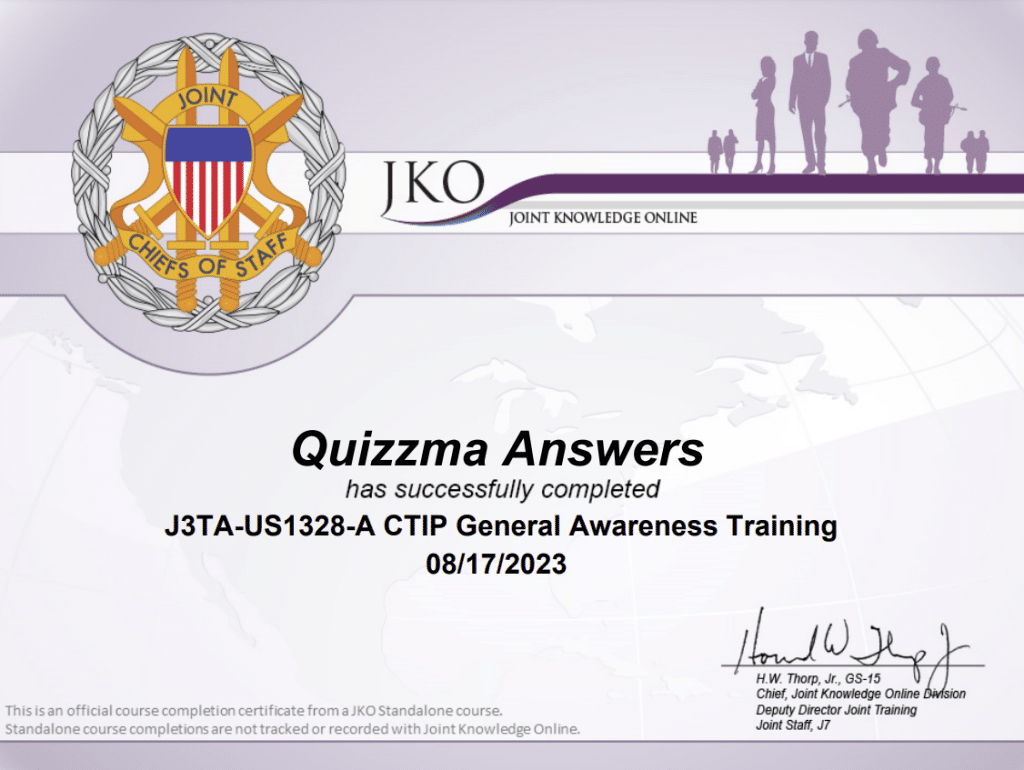Trafficking in Persons, commonly abbreviated as TIP, is a grievous global phenomenon that goes beyond the mere illegal movement of individuals. It is a systematic and organized exploitation of humans, stripping them of their basic rights and freedoms, and forcing them into a life of servitude, labor, or commercial sex against their will.
In essence, TIP represents a modern form of slavery, transcending borders and affecting societies worldwide.
The gravity of TIP does not only lie in its humanitarian concerns. From a broader perspective, it has tangible implications for national security and public safety. Trafficking networks often intersect with other criminal syndicates, thereby perpetuating a cycle of organized crime, corruption, and instability.
Moreover, the very presence of these illicit networks can threaten the security and sovereignty of nations. They challenge immigration and customs systems, undermine the rule of law, and can even finance other severe security threats.
Furthermore, understanding and actively combating TIP is of paramount importance to preserving the core values upon which our society stands. Every individual has the inherent right to freedom, dignity, and protection from exploitation. When these rights are violated, it is not just an affront to the victims, but to humanity as a whole.
Combating Trafficking in Persons (CTIP) General Awareness Training Answers

| Question | Answer |
|---|---|
| Which of the following is NOT a form of force, fraud or coercion used in human trafficking: Physical assault including beating or hitting someone Promising a high paying job but giving a job with no pay in a war torn country Calling a person on the phone to talk about their life Threatening a person’s family in order to compel the person to engage in forced labor or commercial sex | Calling a person on the phone to talk about their life is NOT a form of force, fraud, or coercion used in human trafficking. |
| Which COCOM has a problem with trafficking in persons? (Select all that apply) United States Southern Command United States Indo-Pacific Command United States Central Command United States Africa Command United States Northern Command United States European Command | United States Southern Command United States Indo-Pacific Command United States Central Command United States Africa Command United States Northern Command United States European Command |
| Which of the following are indicators of trafficking in persons? (Select all that apply) Injuries from violence or hazardous work conditions Employees being paid minimum wage Living or working in unsafe conditions Observing someone being escorted or closely monitored at all times A bar located near a military installation Employees being required to work and live in the same location An illegal immigrant working in a run-down restaurant Signs of physical abuse observed (i.e., bruises, cuts, burns, and broken bones) Lack of identification (i.e., no passport or papers) Here are the indicators of trafficking in persons from the options provided: Injuries from violence or hazardous work conditions: Yes, these can be indicators, especially if the person cannot or is unwilling to explain the injuries or if explanations seem rehearsed or inconsistent. Employees being paid minimum wage: No, being paid minimum wage is not an indicator of human trafficking. While traffickers often exploit victims financially, payment at the minimum wage level is legal (though it doesn’t necessarily mean that | Injuries from violence or hazardous work conditions Living or working in unsafe conditions Observing someone being escorted or closely monitored at all times Employees being required to work and live in the same location Signs of physical abuse observed (i.e., bruises, cuts, burns, and broken bones) Lack of identification (i.e., no passport or papers) |
| The Trafficking Victims Protection Act does which of the following: Prevention: Encourages education, awareness, and training to understand trafficking, identify victims, and respond appropriately Prosecution: Encourages a vigorous law enforcement response to traffickers Protection and assistance: Provides holistic services for survivors All of the above | All of the above |
| Can I purchase sex while I serve in the military? Yes, as long as I don’t engage in pimping or pandering Not in the U.S., but yes, if I am deployed to a country where prostitution is legal Yes, if it is not in a place that is off-limits No, UCMJ Article 134 prohibits the purchase of sex | No, UCMJ Article 134 prohibits the purchase of sex. |
| If you see signs and indicators of trafficking in persons what should you do: Wait a few days and revisit the situation to see if it is still there Intervene and confront the alleged traffickers Try to rescue the victims Report it immediately to your chain of command | Report it immediately to your chain of command. |
Combating Trafficking in Persons (CTIP) General Awareness Post Test Answers
- Is trafficking in persons a problem in DoD?
- Answer: False – Trafficking in persons is a global issue and is also a concern for DoD.
- What does trafficking in persons consist of? Select all that apply.
- Answer: Child soldiering, Labor trafficking, Sex trafficking. (Note: Drug trafficking, while a serious issue, is not classified under trafficking in persons.)
- Do suspect actions of traffickers include recruitment, harboring, transporting, providing, obtaining (and for sex trafficking patronizing or soliciting prostitution)?
- Answer: True – Traffickers engage in a range of activities, especially in the context of sex trafficking.
- Why does trafficking in persons occur?
- Answer: All of the above – Each listed factor contributes to the reasons trafficking occurs.
- Who can be victims of trafficking? Select all that apply.
- Answer: Female or male, Adult or child, Foreign national or U.S. citizen, Service members, DoD civilians, and DoD contractor employees, DoD family members.
- Does Trafficking in Persons only occur in poor regions of the world?
- Answer: False – Trafficking in persons occurs globally, including in developed regions.
- Where could trafficking in persons take place?
- Answer: All of the Above – Trafficking can and does happen in various places, including the U.S., war zones, and politically unstable countries.
- Is any person under the age of 18 found in commercial sex considered a per se victim, with no proof of force, fraud, or coercion needed?
- Answer: True – Under U.S. federal law, any person under 18 involved in commercial sex is considered a victim of sex trafficking.
- What does the Trafficking Victims Protection Act of 2000 do?
- Answer: All of the Above – The act offers a comprehensive approach to addressing human trafficking both domestically and abroad.
- Is one method for combating trafficking in persons to be informed and learn the signs and indicators?
- Answer: True – Being informed and recognizing the signs are critical in combating human trafficking.
- Do you have a responsibility to report any trafficking in persons incidents you may witness, avoid establishments that show indicators of trafficking in persons, and report these establishments to your chain of command?
- Answer: True – Every individual has a responsibility to report and be vigilant against trafficking in persons.
- What is an appropriate action if you come across a trafficking in persons violation?
- Answer: Contact the Department of Defense Inspector General (IG) – It’s crucial to report it to the appropriate authorities rather than trying to handle it yourself or ignoring it.
Definition of Trafficking in Persons (TIP)
Trafficking in Persons (TIP) is not just about the illegal movement of individuals across borders. It transcends this basic understanding, delving into the darker realms of exploitation, abuse, and dehumanization.
In essence, TIP signifies a modern form of slavery where people are treated as commodities, bought and sold, and forced into a life they never chose.
- “Severe Forms of Trafficking in Persons” as Defined in Section 7102 of Title 22, U.S.C.:
- The U.S. legal framework offers a precise definition to tackle this grave issue head-on. According to Section 7102 of Title 22, U.S.C., “severe forms of trafficking in persons” encompasses:
- Sex trafficking in which a commercial sex act is induced by force, fraud, or coercion, or in which the person induced to perform such act is below 18 years of age.
- The recruitment, harboring, transportation, provision, or obtaining of a person for labor or services, through the use of force, fraud, or coercion, for the purpose of subjection to involuntary servitude, peonage, debt bondage, or slavery.
- This definition helps law enforcement and policymakers target the most egregious forms of TIP, ensuring that the perpetrators face stringent penalties for their heinous acts.
- The U.S. legal framework offers a precise definition to tackle this grave issue head-on. According to Section 7102 of Title 22, U.S.C., “severe forms of trafficking in persons” encompasses:
- Distinction Between TIP and Other Forms of Illegal Human Movement:
- Human Smuggling: Unlike TIP, human smuggling is based on mutual consent. Smuggled individuals agree, often by paying a fee, to be transported across borders illegally. While the journey may be perilous, the smuggling ends with the arrival at their destination. There is no continued exploitation.
- Kidnapping: While TIP may involve abduction, not all kidnapped individuals are trafficked. Kidnapping is the act of forcibly abducting someone against their will. Trafficking, on the other hand, entails exploitation beyond the act of abduction.
- Illegal Migration: Individuals might migrate illegally in search of better opportunities. This does not necessarily mean they will be exploited upon arrival, unlike victims of TIP.
Additional Resources
Combatting Trafficking in Persons (CTIP) is a multi-faceted initiative, and numerous resources are available to ensure the effective prevention, identification, and mitigation of this heinous crime. Whether you are a concerned citizen, a professional in the field, or someone seeking help, the following resources can provide guidance, information, and support.
U.S. Department of Defense (DoD) Resources on CTIP:
- DoD CTIP Program: The DoD has a dedicated CTIP program, which provides policy, guidance, training, and oversight for the department’s efforts to combat TIP.
- Website: DoD CTIP
- This site offers training resources, policy updates, and other essential tools for individuals in the defense community.
- DoD CTIP Awareness Training Program: Mandatory training for all DoD personnel to understand, recognize, and report human trafficking.
- Access the training via Joint Knowledge Online (JKO).
- DoD CTIP Annual Reports: Yearly reviews and evaluations of DoD’s CTIP efforts.
- Available at the Office of the Under Secretary of Defense for Personnel and Readiness.



